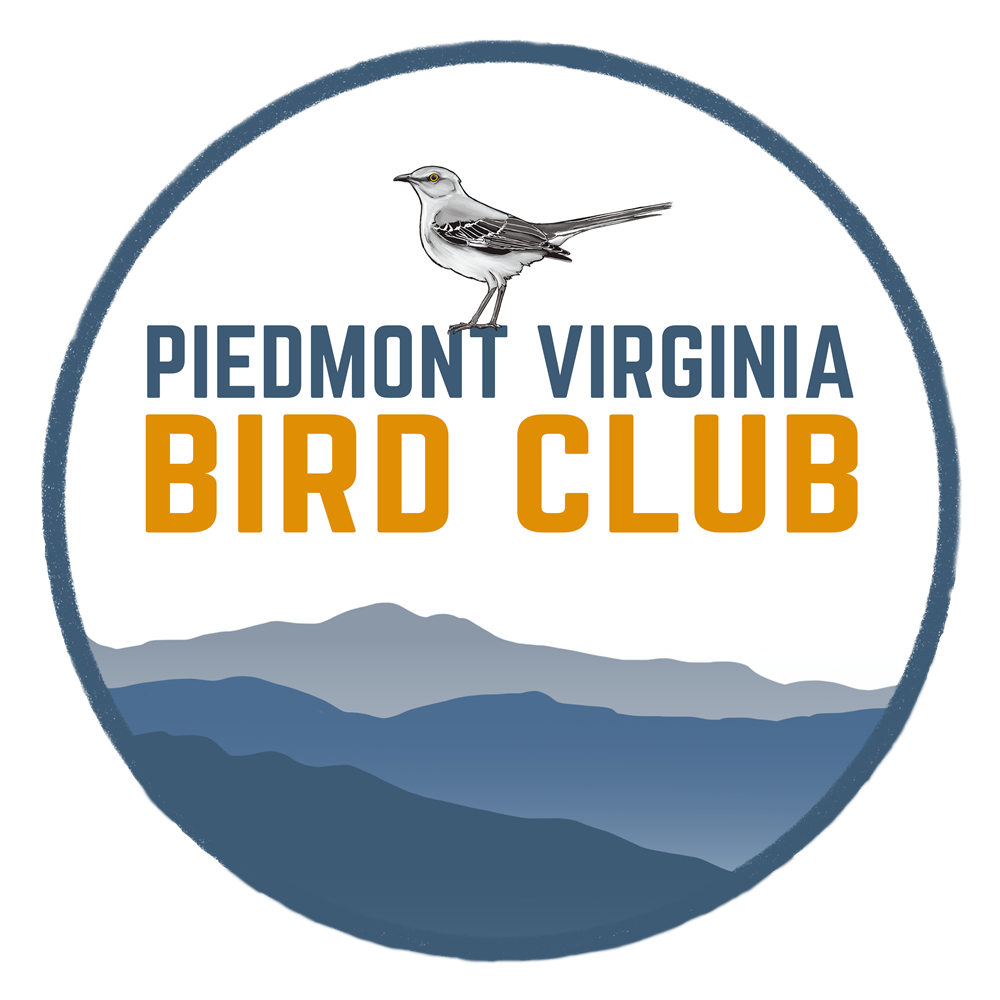The following article by Stauffer Miller and Jenny Gaden reviews the history of the Charlottesville Christmas Bird Count, which local birders have done since 1924 (with a few missed years). Miller and Gaden discussed the history of the Count, as well as plans for the 2024 Count, during the Piedmont Virginia Bird Club’s November monthly meeting. You can read the minutes from this meeting here: (Link coming soon).
Learn how you can participate in upcoming 2024 Christmas Bird Count here.
Can you believe it! The Charlottesville Christmas Bird Count is now 100 years old!
The compiler of that first count of 1924 and therefore its father and originator is a
gentleman named Norval R. Barger. He and L. Clifford Dawson were that first count’s
two participants. And 100 years later we are running that same count, begun so many
years ago.
Barger was born in North Carolina in 1908. He and his family moved to Charlottesville
around 1920. Barger’s father worked as a proofreader for a local book publishing firm.
The sixteen-year-old Barger and twenty-year-old Dawson did that inaugural count by
covering ten miles on foot. There was no other sort of coverage. Barger did not
participate in later counts.
Barger graduated from Concordia Seminary in St. Louis and moved to Madison,
Wisconsin around 1932. He was married there in 1935. In 1942 he created a checklist
of Wisconsin birds. In 1950 he was a game manager for the state of Wisconsin and in
1951 he wrote a book about the state’s mammals. He was a founder of the Wisconsin
Society of Ornithology, its first president and first editor of its journal. He died in Madison
on June 13, 1997 at age 89. We can be proud that someone who made major
contributions to the study and protection of birds got his start with the birds of
Charlottesville and Albemarle County. I’m sure he would be pleased to know we have
kept up the Christmas count he started 100 years ago.
L. Clifford Dawson was born in Charlottesville around 1904, graduated from
Charlottesville High School in 1924 and was an officer in that graduating class. He was
in the 1925 academic class at University of Virginia and may have become an attorney.
He died in Washington, DC on February 13, 1936, apparently from tuberculosis. His
brief obituary in the Daily Progress says he was a son of Mrs. Fred J. Bowyer of Fry
Springs. Barger and Dawson recorded 34 species on that first count. Most interesting
was their 30 Golden-crowned Kinglets. They must have had good binoculars.
Participants in the count’s second year, 1925, were Dawson, Edgar Sorge and William
C. Smith. They did 18 miles on foot. Sorge was killed in a car crash in New York in
1943. Nothing is known of Smith. No counts were done in 1929 and 1930. Compiler for
the 1931 and 1933 counts was Martin Stuart Curtler, born in 1904 in England. He was a
student at the University of Virginia in the early 1930’s. No counts were done in the
1934 to 1942 period.
Instrumental in creating interest in the county’s birds and the Christmas count was
the Reverend John Hugh Grey. He was born in 1902 in Bedford County, Virginia,
graduated from Davidson College in North Carolina and Union Theological Seminary in
Richmond and became pastor of First Presbyterian Church in Charlottesville around
1943. He left Charlottesville around 1948 to accept a pastor position in Bedford, where
he led bird walks and worked with nature writer Ruskin Freer. At the time of his death in
1971, Gray was editing notes on the birds of eastern and central Virginia.
Two members of Grey’s Charlottesville church were Charles E. (Mo) Stevens and
William F. Minor. Grey was compiler for the 1943 count; Stevens and Minor were
participants. Counts were not done in 1944 and 1945, perhaps because Stevens and
Minor were in World War II military service. Stevens was in the European theater while
Minor was in the navy where he served on a landing ship in the Iwo Jima and Okinawa
campaigns of 1945.
Albemarle County native Stevens had taken an interest in birds at an early age. He
also had a strong interest in the natural history of the area and kept voluminous records.
He kept in shape by running in the Marine Corps Marathon. Minor was born in Kentucky
in 1925 and came to Charlottesville around 1940. After the war chemist Minor moved to
Syracuse, NY.
Upon his return from service in Europe, Stevens became compiler in 1946, not to
relinquish that duty for the next forty-eight years, a remarkable record. Grey and Minor
assisted Stevens with the 1946 count, which had two noteworthy bird numbers, 180
Purple Finches and 734 Juncos, the most for both in the count’s 100 years. That year,
1946, was the first Charlottesville count done with the aid of a car.
Kenneth Lawless, a native of Lynchburg and 1946 graduate of Lynchburg College,
became a count participant in 1947 and participated for many years. He 1947 count had
its first woman, Grace M. Whiteman. She was born in 1906 in Illinois and was married to
J. Harrison Whiteman, who managed the local Woolworth’s store. She died in 1996 in
Georgia. The second woman was Constance DuPont Darden, wife of UVA president
Colgate Darden. She helped with the 1951 count.
Constance Darden died in 2002 and Ned Brinkley wrote a memorial piece devoted to
her life that is in the Fall 2002 issue of The Raven. She became interested in birds when
a colony of Yellow-crowned Night Herons began nesting on the property of her and her
husband in the tidewater area. A trail at Piney Grove Nature Conservancy property, the
one with Red-cockaded Woodpeckers, is named for her.
After Mo Stevens vacated the compiler role in 2015, Jenny Gaden took up that post
and has ably carried out its duties every year since. Hats off to her!



